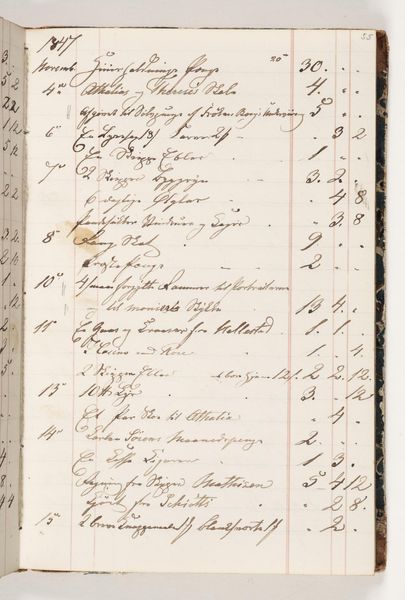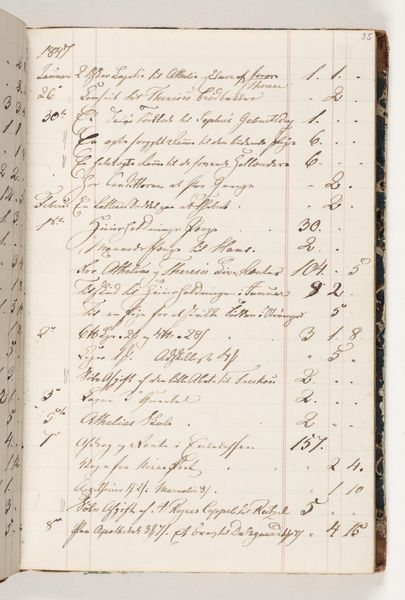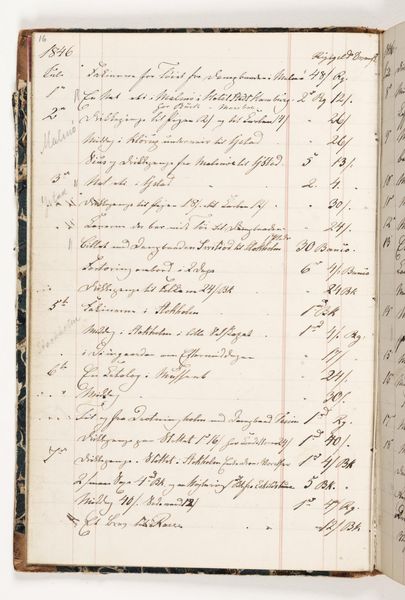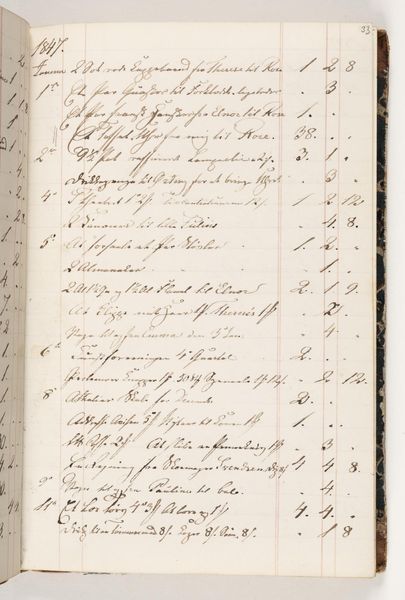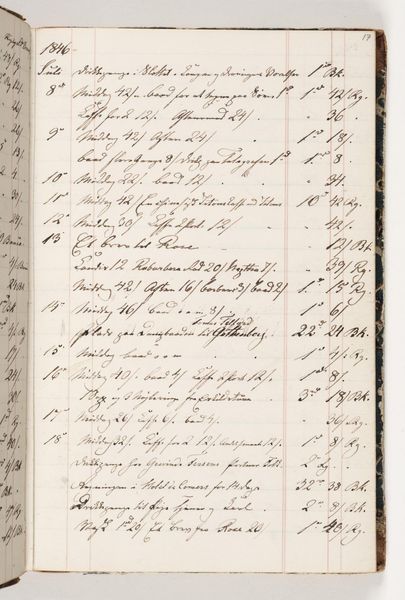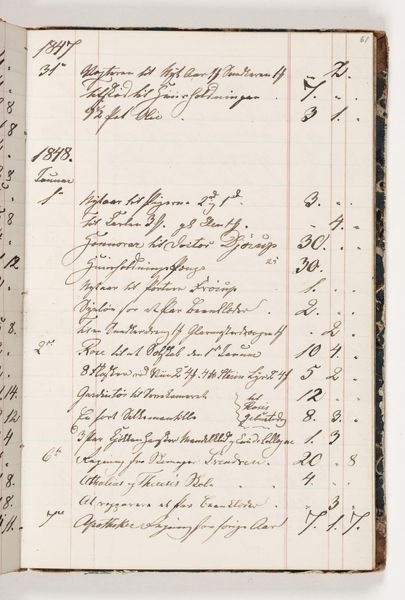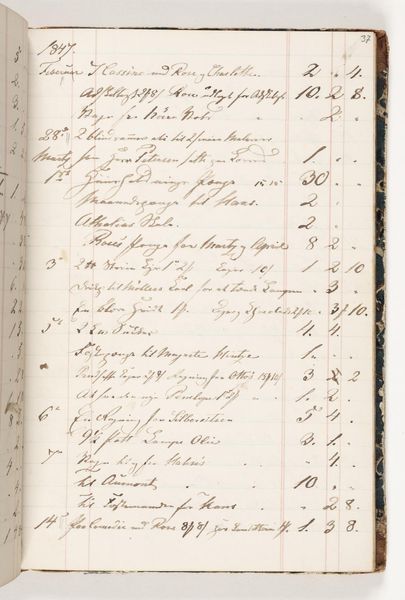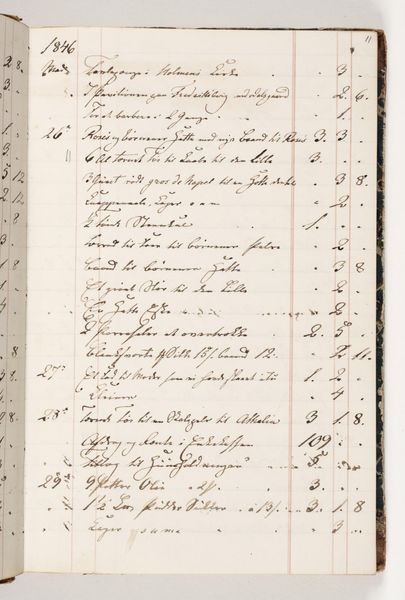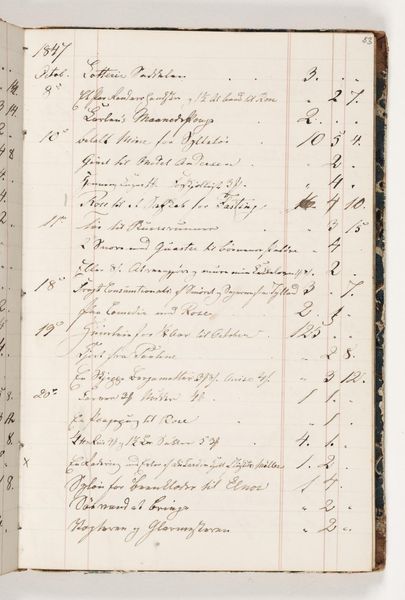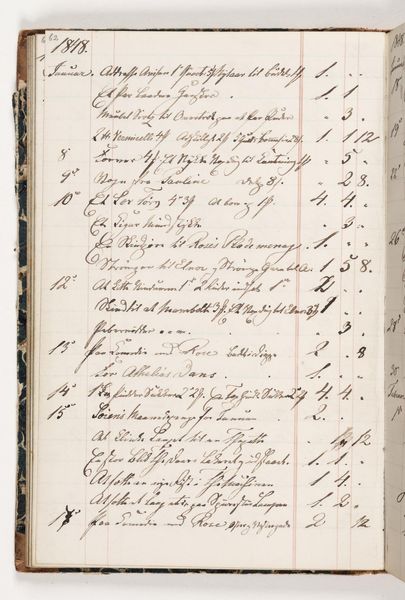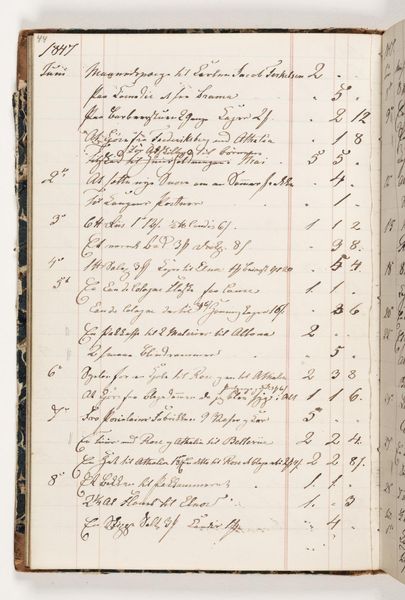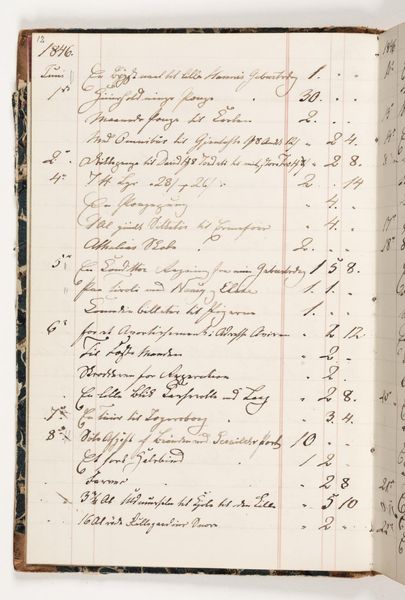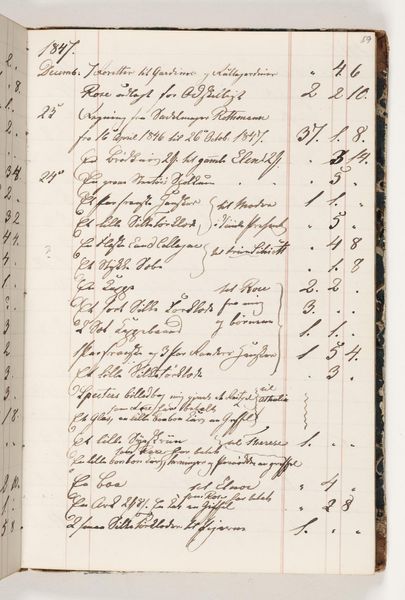
drawing, paper, ink
#
drawing
#
medieval
#
paper
#
ink
Dimensions: 200 mm (height) x 130 mm (width) (bladmaal)
Curator: This drawing is entitled "Regnskab 1847," made in 1847 with ink on paper. It’s part of the collection at the SMK, Statens Museum for Kunst. What is your initial impression? Editor: Well, visually, I am struck by the incredible texture of the paper and the precision of the ink. There's an undeniable feeling of bureaucracy, of human actions and exchanges being meticulously recorded, controlled, archived. It speaks of labor, writing and the materiality of record keeping. Curator: Exactly. As a materialist, I find it compelling how such an everyday object can illuminate so much. The quality of the paper itself tells a story, probably made of cotton or linen rag. The work of production that goes into the paper alone speaks volumes about the resources, both material and labor, involved in such an act as documenting, cataloging transactions. Editor: Building on that, I'd argue we need to see it within the framework of colonialism and its dependence on exploitative labor, of Denmark's 19th century trading practices, and so, who were the laborers that were producing these textiles, that were manning the harbors being documented within this accounting ledger? Who benefits, who pays? I would ask the viewer to confront this. Curator: Yes, and think about the work that accounts themselves are doing here. Consider the materiality of bookkeeping. Look at how this kind of bureaucratic drawing flattens lives into entries, neatly organized, for the efficient and presumably profitable operation of some larger system of extraction. What this meant for various marginalized groups is vital to contemplate. Editor: Indeed. This isn't simply a neutral accounting. The act of writing, of choosing what to record, who gets recorded, and what those numbers mean… that is inherently a political act, with complex, layered social and human implications. These lists tell a story that can unveil complex networks of power and the impact of economic policies on specific bodies, gender, and race. Curator: Looking at this more closely makes us consider what labor is seen as worthwhile, what isn’t, and how it impacts lives on the ground. Editor: Exactly. "Regnskab 1847" makes us aware of what's usually omitted and what implications the power dynamics within society have. Curator: So, ultimately, a mundane record invites inquiry of materials, social systems, and political structures embedded within. Editor: Right. We begin with what might seem a simple document, and find ourselves navigating the very mechanisms of society, economics and human impact of actions in the 19th century.
Comments
No comments
Be the first to comment and join the conversation on the ultimate creative platform.
